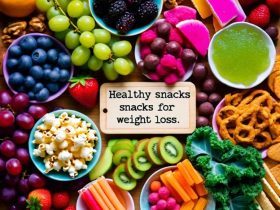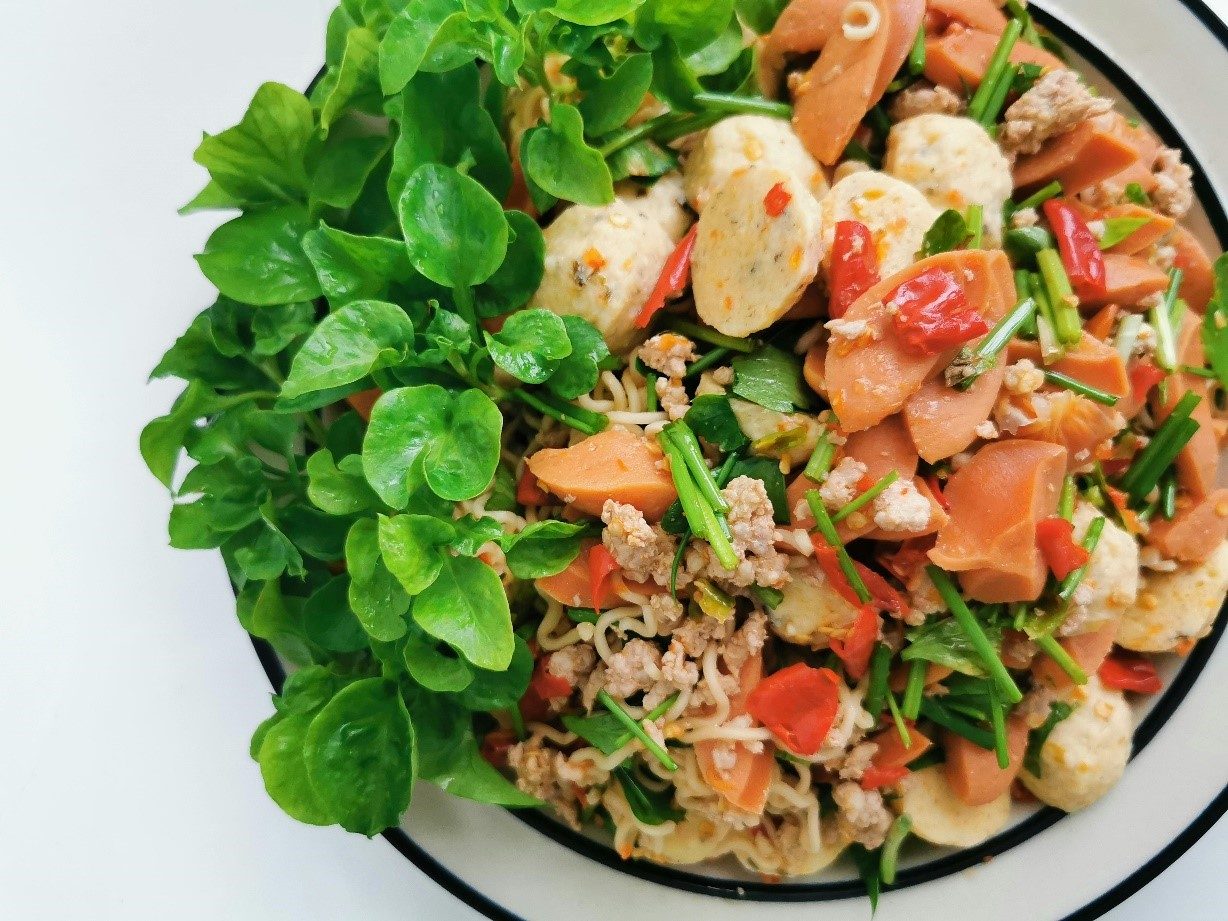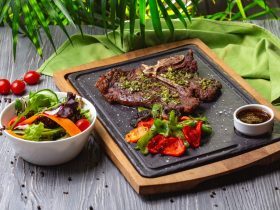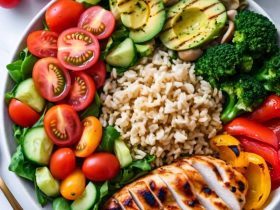Exploring 2 Best Anti-Inflammatory Diet Recipes
In recent years, the notion of an anti-inflammatory diet has gained favor as a means to improve overall health and reduce chronic inflammation, which is a common underlying cause of many health issues. In this thorough guide, we’ll dig into the world of anti-inflammatory diet recipes, exposing their key characteristics and specifications while also addressing frequent issues to help you realize the advantages of this dietary strategy for better health and energy levels.
Introduction to Anti-inflammatory Diet Recipes
The anti-inflammatory diet focuses on foods that help reduce inflammation in the body, lessening the risk of chronic illnesses like heart disease, diabetes, arthritis, and some malignancies. This dietary strategy attempts to promote general health and well-being by integrating nutrient-rich products with anti-inflammatory effects.
Key Features of Anti-Inflammatory Diet Recipes
Entire Food varieties accentuation:
Mitigating diet recipes underscores total, negligibly handled food varieties such as products of the soil, entire grains, lean meats, and great fats. These supplement thick feasts are high in nutrients, minerals, and cell reinforcements, all of which help to bring down irritation.
Rich in omega-3 fatty acids.
Salmon, walnuts, flaxseeds, and chia seeds contain omega-3 fatty acids, which are potent anti-inflammatory agents. Recipes using these items provide a natural way to alleviate inflammation in the body.
Bright Assortment:
Calming recipes for the most part highlight a brilliant exhibit of leafy foods, each with its own unmistakable arrangement of nutrients, minerals, and phytonutrients. Consuming an assortment of plant-based dinners supports a decent admission of cell reinforcements and mitigating compounds.
Specifications for Anti-Inflammatory Diet Recipes
Low in added sugars:
Since added sugars can actuate irritation in the body, mitigating eating less much of the time diminishes or kills them. All things being equal, normal sugars like honey, maple syrup, or natural products are utilized to improve the flavor.
Solid Fats:
Sound fats, like those tracked down in olive oil, avocados, nuts, and seeds, are basic for aggravation decrease. Calming recipes ordinarily remember these fats for balance to advance heart well-being and general prosperity.
Plant-Based Proteins:
Legumes, beans, lentils, and tofu are excellent sources of plant-based proteins that are low in saturated fats and high in fiber. Olive oil, avocados, almonds, and seeds provide healthy fats, which aid in reducing inflammation. Anti-inflammatory recipes usually limit these fats to improve heart health and overall well-being.
Balanced Macronutrients:
Anti inflammatory diet recipes aim to give a balanced macronutrient intake (carbohydrates, proteins, and fats) to increase energy, manage blood sugar, and induce satiety.
Spices and flavors:
Turmeric, ginger, garlic, cinnamon, and cayenne pepper are spices and flavors known for their calming and cell-reinforcement properties, these sparkling trimmings add to the restorative content of modest food assortments while also enhancing the importance of flavor.
2 Best Calming Diet Recipes
1. Turmeric-Ginger Lentil Soup

Trimmings:
• 1 cup dried lentils, washed and drained
• 4 cups vegetable stock
• 1 tablespoon olive oil
• 1 onion, diced
• 3 cloves garlic, minced
• 1 tablespoon new ginger, ground
• 1 tablespoon ground turmeric
• 2 carrots, diced
• 2 celery stems, diced
• 1 teaspoon ground cumin
• Salt and pepper to taste
• New cilantro for adorn
Guidelines:
1. In a huge pot, heat olive oil over medium intensity. Then Add diced onion and sauté until clear,around 5 minutes.
2. Stir in minced garlic, ground ginger, ground turmeric, and ground cumin. Cook for 2 extra minutes until fragrant.
3. Add diced carrots, celery, and washed lentils to the pot. Pour in vegetable stock and heat to the point of boiling.
4. Reduce intensity to low, cover, and stew for 20-25 minutes, or until lentils are delicate.
5. Season with salt and pepper to taste. Serve hot, embellished with new cilantro.
2. Barbecued Salmon with Lemon and Dill

Fixings:
• 4 salmon filets
• 2 tablespoons olive oil
• 2 tablespoons new lemon juice
• 2 cloves garlic, minced
• 1 tablespoon new dill, hacked
• Salt and pepper to taste
• Lemon wedges for serving
Directions:
1. Preheat the grill to medium-high intensity. Brush olive oil over salmon filets and season with salt and pepper.
2. In a little bowl, consolidate the lemon juice, garlic, and dill. Pour the marinade over the salmon filets, ensuring they’re consistently covered.
3. Cook the salmon filets for 4-5 minutes on each side
4. Serve hot from the grill, finished off with lemon wedges.
Conclusion
Integrating mitigating diet dinners into your food routine is a very flavorful and sound method for working on your general well-being. To reduce inflammation and boost vitality, prioritize balanced, nutrient-dense diets while avoiding pro-inflammatory ingredients. Begin experimenting with these delicious dishes to witness firsthand the transformative impacts of an anti-inflammatory diet.
FAQs about Anti-Inflammatory Diet Recipes
What are the main benefits of following an anti-inflammatory diet?
An anti-inflammatory diet can help reduce chronic inflammation in the body, lower the risk of developing chronic diseases, support healthy weight management, improve digestion, and boost overall vitality and well-being.
Are there specific foods to avoid on an anti-inflammatory diet?
Yes, certain foods can promote inflammation in the body and should be avoided or consumed in moderation while following an anti-inflammatory diet. Processed foods, processed carbs, trans fats, and binge drinking are among examples.
Can I still enjoy delicious meals on an anti-inflammatory diet?
Totally! Different delectable and fulfilling dishes supplement a mitigating diet. You might make extraordinary dinners that fit your well-being objectives by consolidating spices, flavors, and solid cooking strategies.
Are there any incidental effects to changing to a mitigating consumption of fewer calories?
While most people benefit from a calming diet, others might encounter detoxification side effects like weakness, cerebral pains, or stomach related aggravations. These symptoms are frequently temporary and diminish as the body adjusts to the new.
Q5: Can I customize anti-inflammatory recipes to suit my dietary preferences or restrictions?
Absolutely! Anti-inflammatory recipes are highly adaptable and can be customized to accommodate various dietary preferences, including vegetarian, vegan, gluten-free, or dairy-free options. Feel free to substitute ingredients or adjust seasonings according to your needs.















Leave a Reply